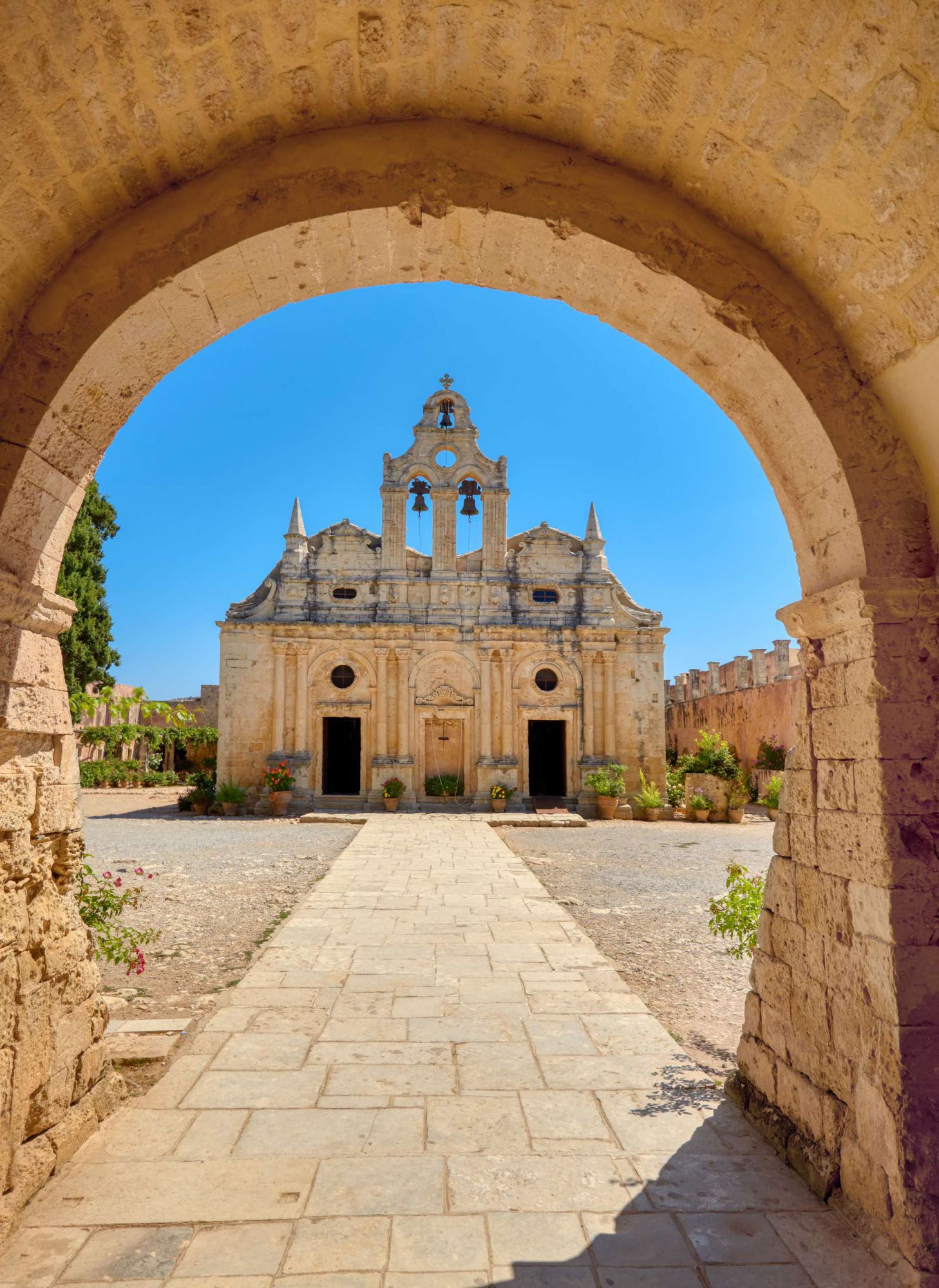Crete, the largest of the Greek islands, is not only known for its stunning landscapes, rich history, and vibrant culture but also for its deep spiritual roots. The island is home to numerous monasteries, churches, and sacred sites that offer a glimpse into its profound religious heritage. These places are not just of historical significance but also serve as serene retreats for those seeking spiritual solace and enlightenment. Exploring the spiritual side of Crete provides a unique opportunity to connect with the island’s ancient traditions and spiritual practices.
1. Monastery of Arkadi
One of the most historically significant and spiritually profound sites in Crete is the Monastery of Arkadi. Located near Rethymno, this 16th-century monastery is an architectural masterpiece, known for its baroque influences and fortified structure. The Monastery of Arkadi played a crucial role during the Cretan resistance against Ottoman rule in 1866, becoming a symbol of freedom and sacrifice. Today, it stands as a peaceful retreat where visitors can reflect on its history and admire its beautiful frescoes and icons. The surrounding gardens and the scenic views of the Cretan countryside add to its serene ambiance.
2. Monastery of Preveli
Situated on the south coast of Crete, the Monastery of Preveli offers breathtaking views of the Libyan Sea. This monastery is divided into two parts: the Lower (Kato) Monastery of St. John the Baptist and the Upper (Pisso) Monastery of St. John the Theologian. The latter is the most visited and features a museum showcasing religious artifacts, manuscripts, and icons. The Monastery of Preveli is also known for its role in the resistance against the German occupation during World War II. Visitors can explore its beautiful chapels, learn about its history, and enjoy the tranquility of its location.
3. Monastery of Agia Triada
The Monastery of Agia Triada (Holy Trinity) is one of the most impressive monastic complexes in Crete. Located on the Akrotiri peninsula near Chania, this monastery was founded in the 17th century by two Venetian brothers who converted to Orthodoxy. The monastery’s architecture is a blend of Byzantine, Renaissance, and local styles, featuring a stunning church, a library, and a museum. The Monastery of Agia Triada is also known for its olive oil and wine production, which visitors can sample and purchase. The peaceful surroundings and the beautifully maintained gardens make it an ideal spot for contemplation and spiritual reflection.
4. Monastery of Chrissoskalitissa
Perched on a rocky outcrop overlooking the Mediterranean Sea, the Monastery of Chrissoskalitissa (Golden Step) is a picturesque site near Elafonissi Beach. According to legend, one of the monastery’s 90 steps is made of gold but is visible only to those who are sinless. This 17th-century monastery offers stunning views of the sea and the surrounding landscape. Visitors can explore its chapel dedicated to the Dormition of the Virgin Mary, its small museum, and the serene courtyard. The Monastery of Chrissoskalitissa provides a peaceful retreat for those seeking spiritual renewal.
5. Toplou Monastery
Located in the eastern part of Crete, near Sitia, the Toplou Monastery is one of the island’s most important religious centers. Founded in the 15th century, this fortified monastery is dedicated to the Virgin Mary and St. John the Theologian. The Toplou Monastery houses a remarkable collection of icons, frescoes, and religious manuscripts. It is also known for its production of high-quality wine and olive oil. The monastery’s museum offers insights into its history and religious significance. The serene environment and the panoramic views of the surrounding vineyards and olive groves make it a perfect place for meditation and reflection.
6. Cave of the Apocalypse
The Cave of the Apocalypse near the village of Marathokefala is another significant spiritual site in Crete. According to local tradition, this cave is where St. John the Theologian wrote the Book of Revelation. The cave has been transformed into a small chapel adorned with icons and candles, creating a mystical atmosphere. The Cave of the Apocalypse is a place of pilgrimage for those seeking spiritual insight and a connection to the early Christian history of the island.
7. Sacred Sites in Nature
Crete’s natural landscapes also hold spiritual significance. The island’s mountains, gorges, and caves have been revered as sacred sites since ancient times. The Dikteon Cave, for example, is believed to be the birthplace of Zeus, the king of the Greek gods. This cave, located in the Lassithi Plateau, has been a place of worship for millennia. Visitors can explore its impressive stalactites and stalagmites while contemplating its mythological significance.
The Samaria Gorge, one of the longest gorges in Europe, is another natural site with spiritual importance. Walking through this stunning gorge, surrounded by towering cliffs and pristine nature, offers a sense of awe and reverence for the natural world.
Conclusion
Exploring the spiritual side of Crete provides a deep and enriching experience. The island’s monasteries and sacred sites offer not only historical insights but also moments of tranquility and reflection. Whether you are visiting grand monasteries like Arkadi and Agia Triada or seeking solitude in the Cave of the Apocalypse, Crete’s spiritual heritage invites you to connect with its profound traditions and natural beauty. Embracing the spiritual side of Crete allows you to experience the island in a meaningful and transformative way, making your stay truly unforgettable.


